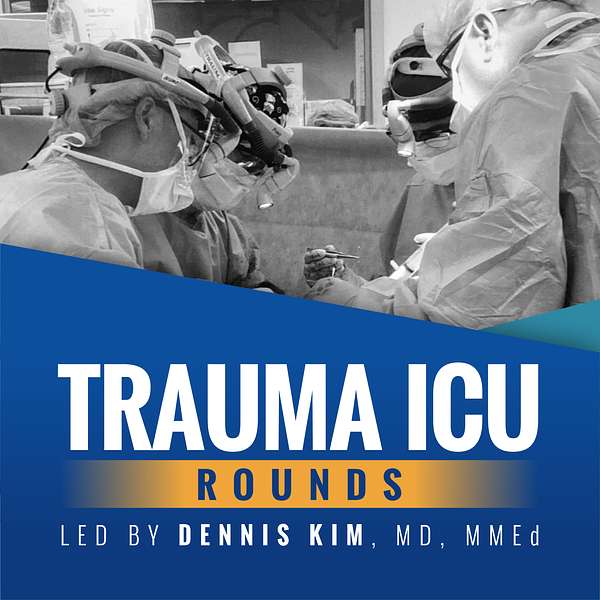
Trauma ICU Rounds
Trauma ICU Rounds
Episode 9 - The rEVOLUTION of ECMO
What are the indications for ECMO beyond ARDS and refractory cardiogenic shock? In which patients should we consider eCPR and is this the new standard of care for patients sustaining out-of-hospital cardiac arrest? Finally, how do I work towards safely and efficiently weaning my patient from VV or VA ECMO?
These are just a few of the questions that we address on Rounds with our guest faculty member and Director of the UCLA Adult ECMO Program, Dr. Peyman Benharash. In this comprehensive review of ECMO we also explore the regionalization of ECMO care here in Los Angeles County, as well as the day-to-day considerations that you want to bear in mind when assessing and caring for your patients requiring extracorporeal life support.
Learning Objectives
By the end of rounds you should be able to:
1. Understand the indications & contraindications to VV and VA ECMO support
2. Describe the basic components of an ECMO circuit
3. Describe the role of eCPR in the management of adult patients with out-of-hospital cardiac arrest
4. Discuss key management strategies to safely wean patients from ECMO
5. Describe common complications of ECMO and strategies to mitigate them
Take Home Points
- ECMO is time-sensitive, therefore, early and safe cannulation is an important determinant of outcome
- ECMO is a bridge to therapy
- Use of scoring systems like the Murray Score may be useful to stratify the severity of ARDS among patients being considered for VV ECMO support
- The indications for ECMO are expanding to include technically challenging operative cases
- eCPR is a promising therapy for patients presenting to an ECMO center of excellence with refractory VF/VT cardiac arrest
- ECMO therapy, particularly VA ECMO, may affect virtually organ system
- The potential role of ECMO therapy during the current COVID-19 pandemic remains to be defined
Time Stamps
- 00:12 Introduction
- 01:16 Overview of Rounds
- 02:13 The rise of ECMO
- 02:46 CESAR & EOLIA trials summarized
- 05:40 Venovenous (VV) vs. Venoarterial (VA) ECMO
- 08:24 How to decide whether or not to place a patient on VA ECMO?
- 10:33 Timing & indications for ECMO support
- 11:38 Murray Score explained
- 12:24 Contraindications & patient selection for VV & VA ECMO
- 13:56 Expanding indications for ECMO
- 15:23 ECMO in the Setting of Trauma: Pneumonectomy & Retrohepatic IVC injuries
- 17:45 Regionalization of ECMO in Los Angeles County
- 21:52 Who should be cannulating?
- 23:22 Approach to cannulation
- 24:50 Distal perfusion catheters for VA ECMO
- 26:10 Differences between VV & VA ECMO
- 28:24 The W5H of eCPR
- 34:26 Considerations for access for VV ECMO
- 35:53 Avalon catheter
- 37:51 VV versus VA ECMO circuits/set-up explained
- 43:30 Getting your patient off of ECMO & other key considerations
- 48:56 Vasopressor & inotropic therapy during VA ECMO
- 50:31 Virchow’s triad, antithrombotic therapy & bleeding on ECMO
- 54:30 AKI, end-organ dysfunction & the daily assessment of patients on ECMO
- 57:22 ECMO 2.0 & the role of evolving technologies
- 61:20 Role of ECMO during the COVID-19 pandemic
- 66:45 Take-home points
- 68:38 Outro